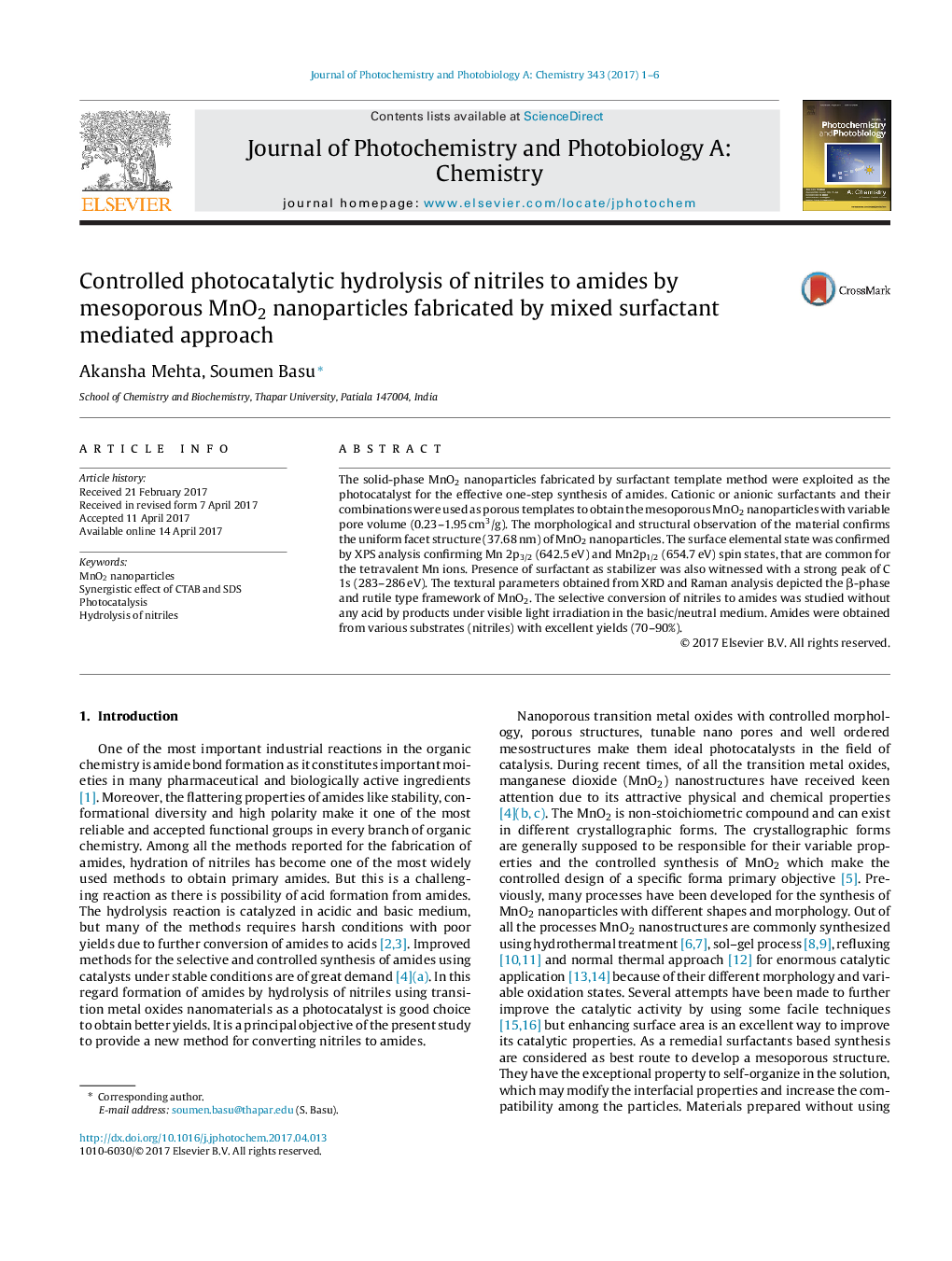| Article ID | Journal | Published Year | Pages | File Type |
|---|---|---|---|---|
| 6452421 | Journal of Photochemistry and Photobiology A: Chemistry | 2017 | 6 Pages |
â¢Synthesis of mesoporous MnO2 by using mixture of cationic and anionic surfactants with variable pore volume.â¢The cat-anionic surfactant yields 5 times higher surface area (195.32 m2/g) than their corresponding individual form (CTAB 29 m2/g and SDS 36 m2/g).â¢Synergic effect, low critical aggregation concentration of cat-anionic surfactant is endorsed for its high surface area.â¢The mesoporous MnO2 as a novel catalyst for the hydrolysis of nitriles to amides.â¢Higher yield (90%) in basic reaction medium compare to neutral medium (70%).
The solid-phase MnO2 nanoparticles fabricated by surfactant template method were exploited as the photocatalyst for the effective one-step synthesis of amides. Cationic or anionic surfactants and their combinations were used as porous templates to obtain the mesoporous MnO2 nanoparticles with variable pore volume (0.23-1.95 cm3/g). The morphological and structural observation of the material confirms the uniform facet structure (37.68 nm) of MnO2 nanoparticles. The surface elemental state was confirmed by XPS analysis confirming Mn 2p3/2 (642.5 eV) and Mn2p1/2 (654.7 eV) spin states, that are common for the tetravalent Mn ions. Presence of surfactant as stabilizer was also witnessed with a strong peak of C 1s (283-286 eV). The textural parameters obtained from XRD and Raman analysis depicted the β-phase and rutile type framework of MnO2. The selective conversion of nitriles to amides was studied without any acid by products under visible light irradiation in the basic/neutral medium. Amides were obtained from various substrates (nitriles) with excellent yields (70-90%).
Graphical abstractDownload high-res image (132KB)Download full-size image
